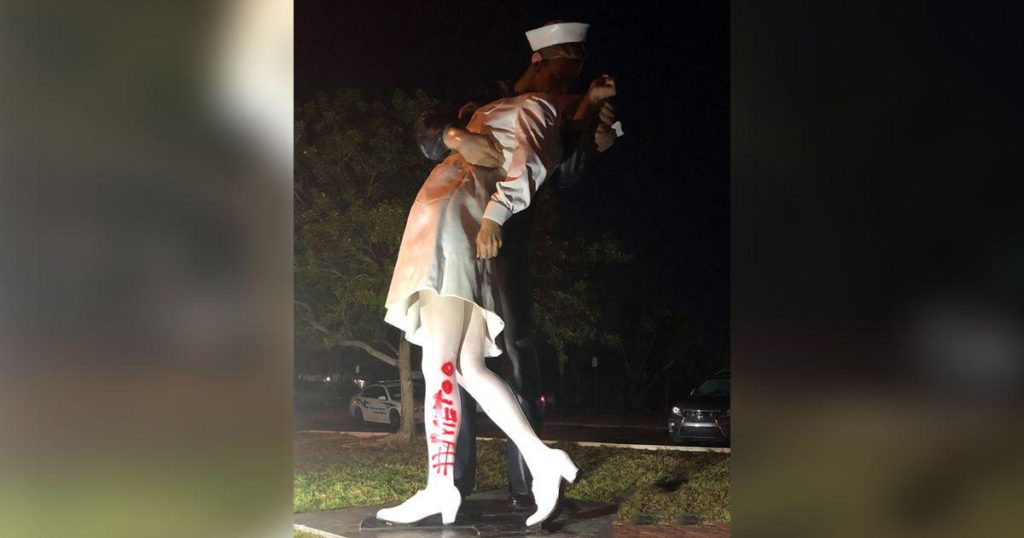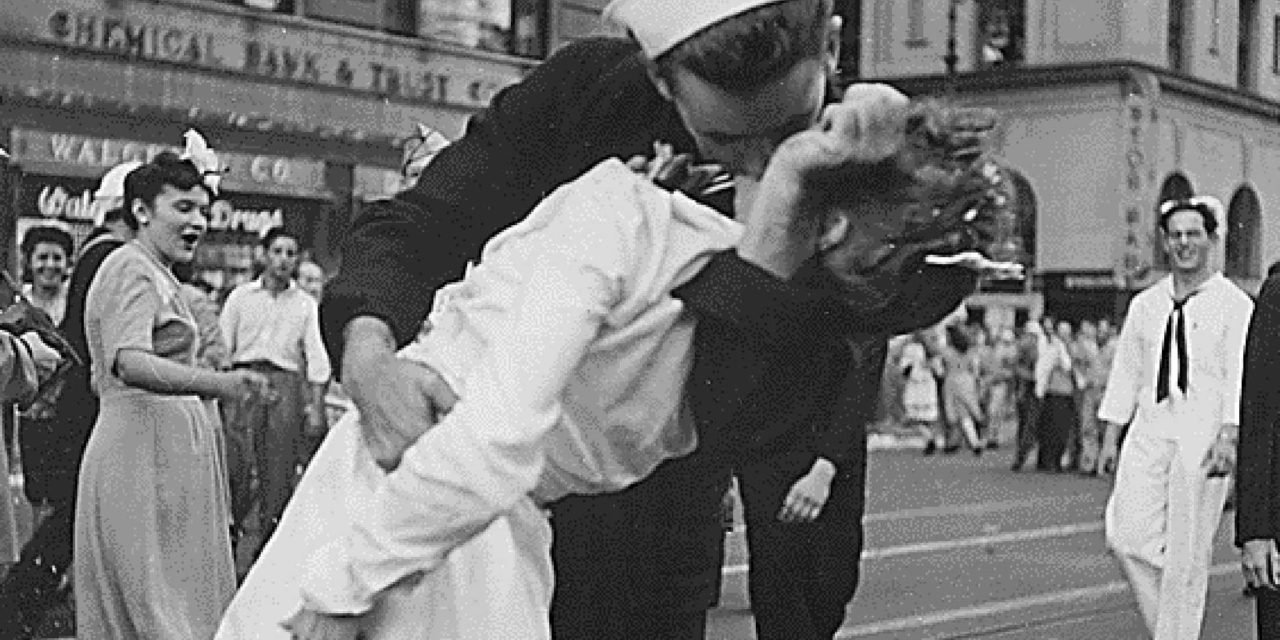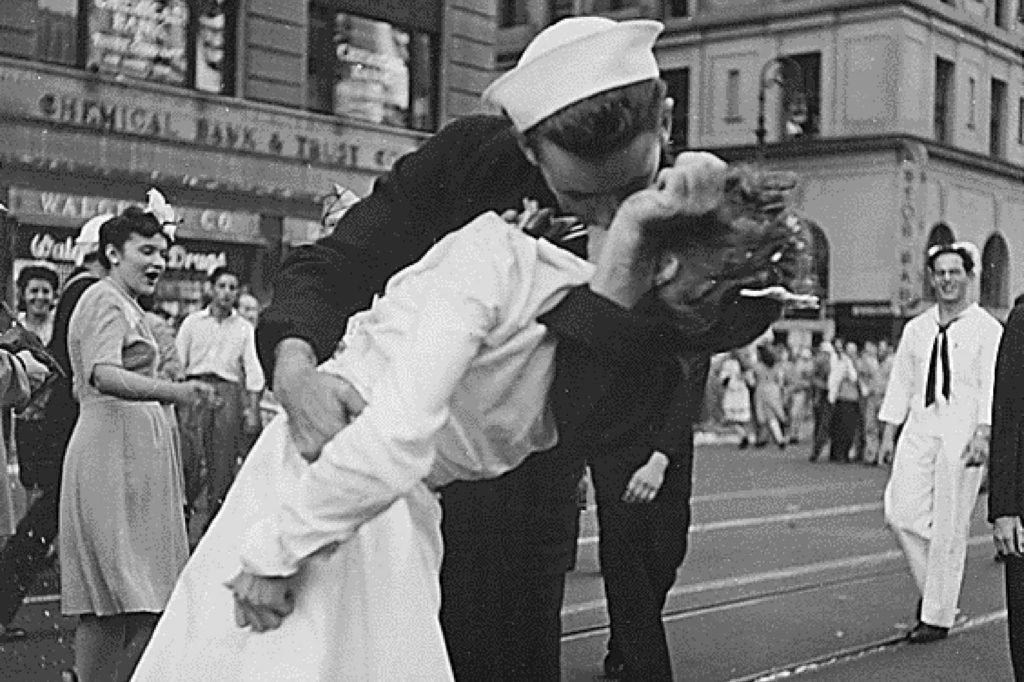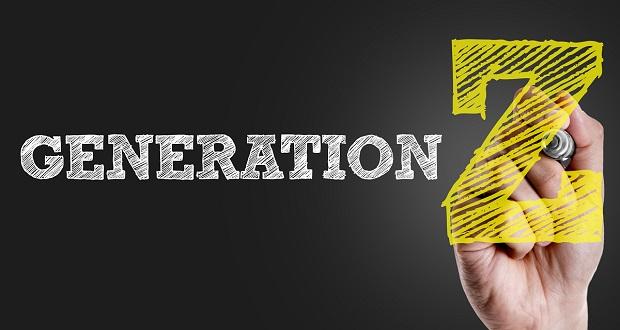Content Warning: This post includes discussion of issues surrounding consent and the #MeToo movement.
You are almost certainly aware of the iconic photo: a dental assistant (Greta Zimmer Friedman) swept into an embrace and kiss by a Navy sailor, (George Mendonsa) who was overjoyed to learn that WW2 had just ended. I recall seeing this photo in elementary school, learning the story behind it, and smiling along with the passersby in the photo, taking in what they perceived to be an unbridled moment of joy.
I would hazard a guess that most people have not seen another, similar image:

This photo depicts one of a series of sculptures entitled “Unconditional Surrender” that was erected in cities across the U.S. As illustrated in this shot, someone spray-painted “#MeToo” on a leg of one statue on display in Sarasota, Florida. If you do not yet know why, it would be hard to blame you; this part of the story has been substantially eclipsed by cultural narratives that start and stop at the image that many have assumed to be a charming moment of elation.
When Japan surrendered on August 15, 1945, George Mendonsa was attending a show at Radio City Music Hall with his girlfriend. Upon hearing the news, the two of them left the show and headed out into Times Square, where he spotted Greta Zimmer Friedman; her uniform reminded him of the nurses he had served with, and on a whim, he pulled her in for a kiss.
The story that is rarely told alongside this is Friedman’s experience, as a then-21-year-old woman. She has been quoted in numerous interviews describing the moment very differently from how we collectively imagine it:
“I did not see him approaching, and before I know it I was in this vise grip.”
“I felt he was very strong, he was just holding me tight… it wasn’t really a romantic event.”
“It wasn’t my choice to be kissed. The guy just came over and kissed or grabbed.”
With this context, different details rise to the surface in the photo: Mendonsa’s fist and elbow locked around Friedman’s neck, and Friedman’s left hand holding down her skirt as it rides up.
This side of the story has emerged more prominently in recent years, but many remain none the wiser. The sculpture was spray-painted with the message #MeToo following George Mendonsa’s death in 2019. Notably, the coverage of this vandalism and Friedman’s experience frequently prompted backlash, with commentators and internet commenters alike bristling at “woke culture” unnecessarily “ruining” a beautiful moment.
That people feel more entitled to their mis-imagined and one-sided idea of what was happening in the photo than to the truth of the person experiencing it is striking… and speaks to the immense power of dominant narratives – those produced and reinforced by those with access to identity-based power.
That people feel more entitled to their mis-imagined and one-sided idea of what was happening in the photo than to the truth of the person experiencing it speaks to the immense power of dominant narratives. Share on XDr. Lee Anne Bell, a scholar of history, African American Studies, and social justice education, offers a Storytelling Project Model that explains how various experiences and narratives function within a society.
According to her model, Stock Stories are “the tales told by the dominant group, passed on through historical and literary documents, and celebrated through public rituals, law, the arts, education, and media” that legitimize the perspectives of dominant groups. The unquestioned embrace of the V-J Day shot is a perfect example – here the joy of Mendonsa, a white man and U.S. Navy Sailor becomes not only the focal point of the moment, but the only story recalled in the vast majority of media.
Next, Dr. Bell introduces Concealed Stories, those “eclipsed by stock stories that colonize the limelight…. concealed stories embody the teeming, unruly, and contradictory stories that leak out from the margins.” Here, Friedman’s surprise at her bodily autonomy being violated is the concealed story. There is nothing fundamentally less valid or important about this story – in fact, one could easily argue that it is the more important story. However, because it challenges a memory that we have collectively treasured as a society, and represents the experience of someone with a more marginalized identity in the context of societal oppression of women, it has remained largely concealed and has seen far less coverage by media.
Resistance Stories, according to Dr. Bell’s model, “narrate the persistent and ingenious ways people, both ordinary and famous, resist …and challenge stock stories…in order to fight for more equal and inclusive social arrangements.” Here, the spray-painted sculpture is an example of a resistance story. However we may feel about someone altering a piece of artwork without consent from the artist, this resistance story was effective in that it rejected the reproduction and romanticization of this historical moment, and brought new attention to the concealed story. Even the title of the artwork with this context takes on a new meaning; “Unconditional Surrender” feels like an uncomfortable violation and re-writing of Friedman’s lived experience.
Finally, Dr. Bell offers, Emerging and Transforming Stories are “new stories we construct to challenge stock stories, build on and amplify concealed and resistance stories… Counter-stories develop when people discuss and analyze the larger cultural dynamics of stock, concealed, and resistance stories. What emerges from these story-based dialogues is a transformed understanding of oneself and others, and how systems of bias, prejudice, and discrimination can be challenged and rebuilt.”
Many of the more recent articles interrogating this photograph and Friedman’s experience more extensively can be considered emerging stories. Monica Hesse with the Washington Post asserts in her article “Don’t blame MeToo for ruining the most iconic kiss in history. The photo was never romantic”:
In the hours after Mendonsa’s death, I watched reactions spread online — many of which amounted to, “Today, this iconic photo might be considered an assault.” Some folks meant it indignantly: See how crazy the world has become? Others also meant it indignantly, but the opposite way: How dare we honor this bad man?
I’d like to think of it more as a statement of fact. Today, this iconic photo might be considered an assault. It doesn’t mean Mendonsa was a monster. It doesn’t mean humans were bad in 1945. It just means that stories don’t always behave as we’d like. Our fantasies can be punctured by the reality of other people’s feelings… A kiss based on one person’s joy and another person’s non-consenting shock isn’t really a perfect kiss… it never was.
Ultimately, it may be true that this event would not have been understood as an assault by many in the context of the time that it happened… and, it can also be true that it was an unwanted, negative experience for Friedman. Perhaps, it should have been understood as an assault… but it would be many decades before women’s marginalized narratives of their autonomy being violated were valued enough to be taken seriously and prompt cultural shifts around the importance of consent and accountability.
Ultimately, it may be true that this event would not have been understood as an assault by many in the context of the time that it happened… and, it can also be true that it was an unwanted, negative experience for Friedman. Share on XNo narratives, particularly no dominant-group narratives or “stock stories,” come without consequence. Here, I would suggest that we consider the ways that the simplification and romanticization of this image and other accounts of events throughout history may have informed collective acceptance of myths about sexual assault and survivors, preventing a movement like #MeToo from gaining traction sooner.
History is, as the adage goes, written by the winners. While we often think of this in the context of two societies clashing in a war and the victors chronicling the tales of their conquests proudly, just as important – if not more so – is thinking about who within our own cultures and systems of oppression has enjoyed the power that enables their narratives to rise to the surface at the expense of others. A powerful and productive question to get in the habit of asking in response is: What do we risk missing as a result?
History is written by the winners. We think of this in the context of societies, but just as important is who within our own cultures and systems enjoys the power that enables their narratives to rise at others' expense. Share on XImportantly, this photograph is one of the most famous American images surrounding WW2, and it centers and romanticizes the experience of two white Americans. This also is not a mistake or without consequence. While most Americans know at least one part of the story behind the image, far fewer know about the segregation and harassment faced by Black American troops in the war, deemed by the military unfit for leadership or combat. Many of us learned in school about the GI Bill. Far fewer were taught about the ways it denied 1.2 million Black veterans the benefits afforded to their white peers. Far from being relegated to the past, egregious consequences of segregation and racist barriers to accruing capital and securing home ownership persist for many Black families today. Staggeringly illustrating the impact of racism and intergenerational access to wealth or a lack thereof, the gaps between white and Black American homeownership have not only persisted but grown since the 1968 Fair Housing Act. This is why history, and the voices with and without access to platforms to share their experiences, absolutely matter.
Last week, the Texas senate passed a bill that removes requirements from a previously-passed House bill that students learn about Native American history, Martin Luther King Jr.’s “I Have A Dream” speech, and writings from the women’s suffragist movement. It would also eliminate the previous bill’s requirement that students be taught about the history of slavery and the Ku Klux Klan as morally wrong. The fate of the bill remains in question; it must also pass the Texas House to become law. The House vote will be delayed until at least August 7, as over 50 Democratic members of the House traveled to Washington, D.C. to protest racist voter suppression measures in their state.
As we consider “by whose standards” history is chronicled, recounted, and remembered on a cultural level, it is imperative that we actively seek out the concealed and resistance stories relegated to the sidelines, and work to amplify them through emerging and transforming stories.
As we consider 'by whose standards' history is remembered on a cultural level, we must also seek out the concealed and resistance stories relegated to the sidelines and amplify them through emerging and transforming stories. Share on X



















